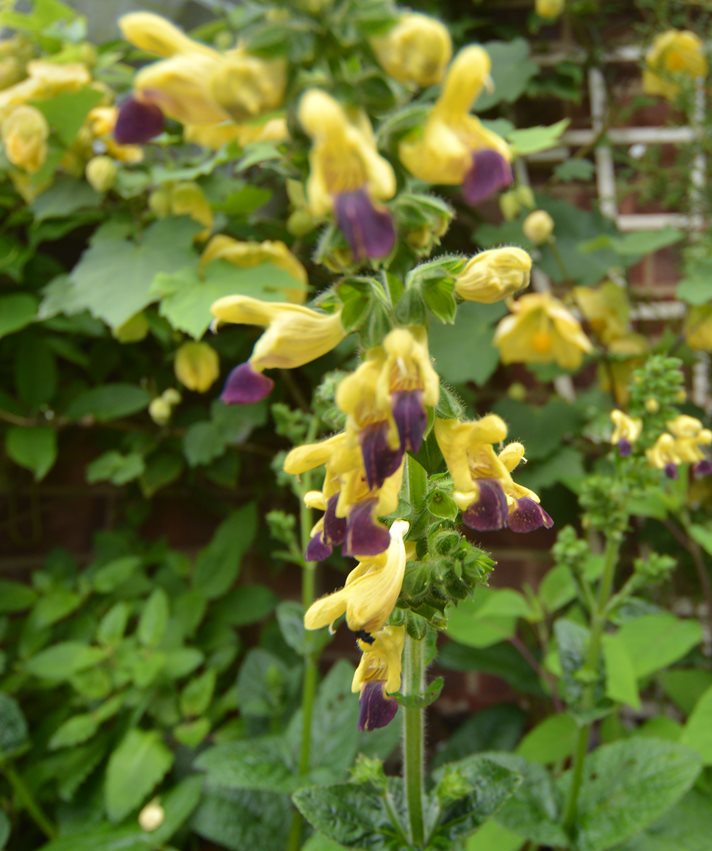Bully for bulleyana

With milder winters, Salvias have perhaps become more popular in the last few years. One Salvia that should be on every collectors list is S. bulleyana, a true connoisseurs plant. There is some confusion over the naming of this, so you might find it listed under S. flava megalantha. It also grows by a trade name of ‘Blue Lips’.
I don’t tend to grow too many Salvias, as I don’t have that many sunny areas, but S. bulleyana caught quite a lot of attention at our recent NGS garden opening. I’ve paired it up here with Abutilon ‘Canary Bird’ with its big soft yellow cup flowers, looking like a striking pair.
Reaching 60cm height and spread, this plant is a bee magnet. Normally flowering from July, although this year due to the mild winter it started in late June, it shows off its pale yellow flowers with bluish-mauve lips, above coarse and crinkly ground hugging foliage. It does make a good fragrant, cut flower, although personally I’d rather see this on the plant than in a vase – it’s just too special to cut.
Salvia involucrata 'Bethellii', the rosy-leaf sage, is a woody perennial with 2 metre high stems of deep magenta bracts which contrast with the light pink of the flowers from August to October. Foliage is hairy and has a velvety feel to it. This attracts hummingbirds in America. Over here it should appeal to moths instead. Best if overwintered undercover, unless in a very mild spot.
Salvia glutinosa (glutinous sage, sticky sage, Jupiter's sage, Jupiter's distaff) produces pale yellow flowers from July to August. Originating from scrub and moist places in deciduous forests, this is one Salvia that will happily grow in light or partial shade. Growing to 1.2 metres high and nearly as wide it will happily spread in a free draining soil by its running roots, though it is never invasive, making this a lovely woodland perennial. By deadheading the spent flowers before it has had a chance to make seed should encourage this deciduous perennial to carry on flowering for longer. The common name of ‘sticky sage’ might refer to either the very sticky calyx of the flower or the tacky-like substance that appears on the plant during summer.
Another Salvia ideal for the woodland garden is Salvia nipponica, the Kyushu Woodland Sage, originating from Kyushu in Japan. Soft pale yellow flowers appear from September through to November. To ensure the best flowering try and offer some shelter from frosts by planting at the base of a north facing wall. This one doesn’t like being so dry as most Japanese Salvias grow on or in streams.